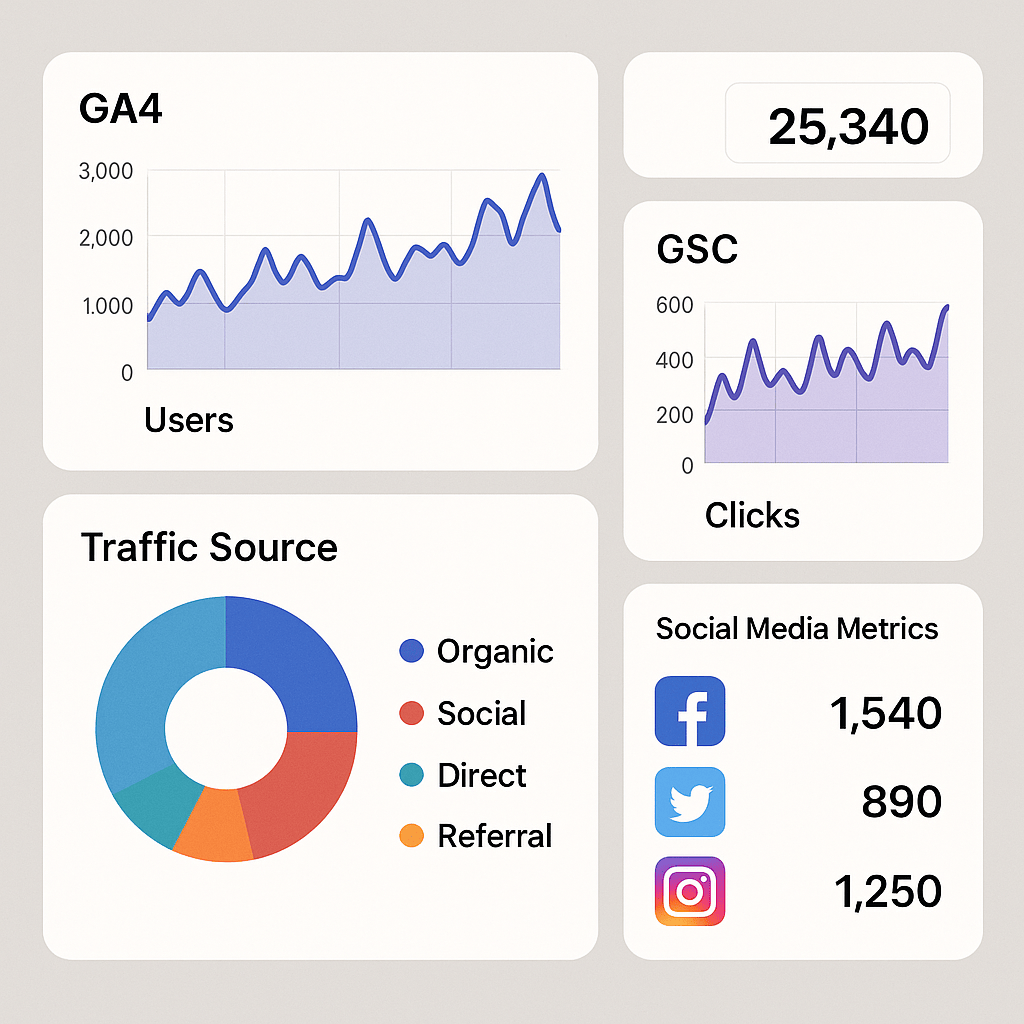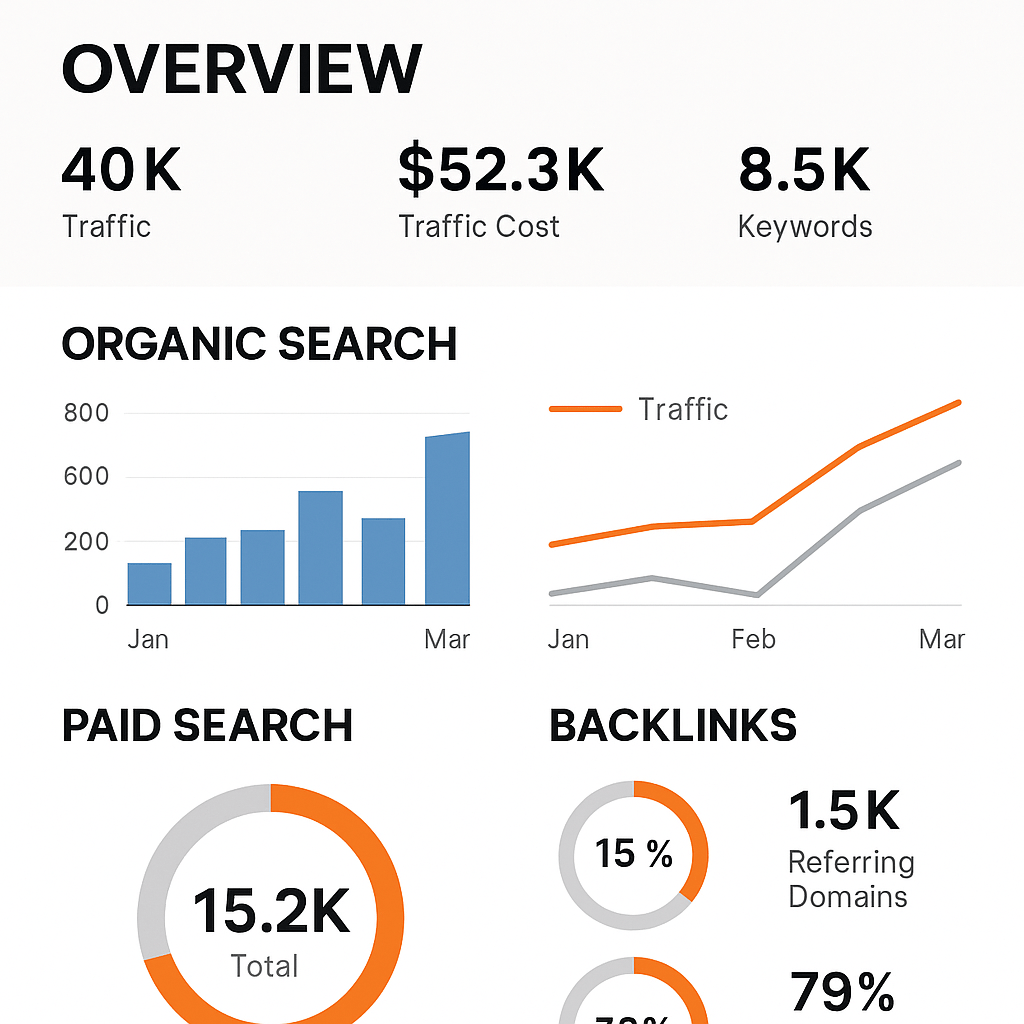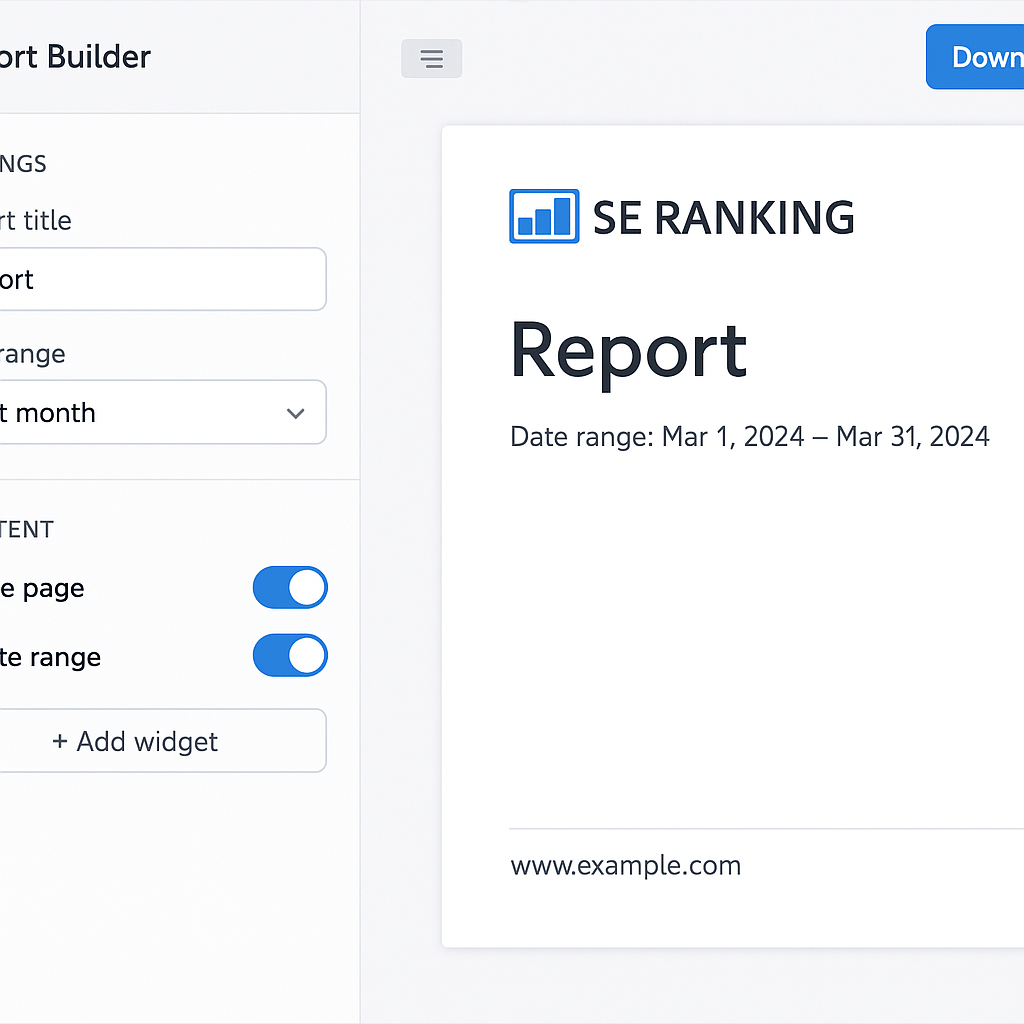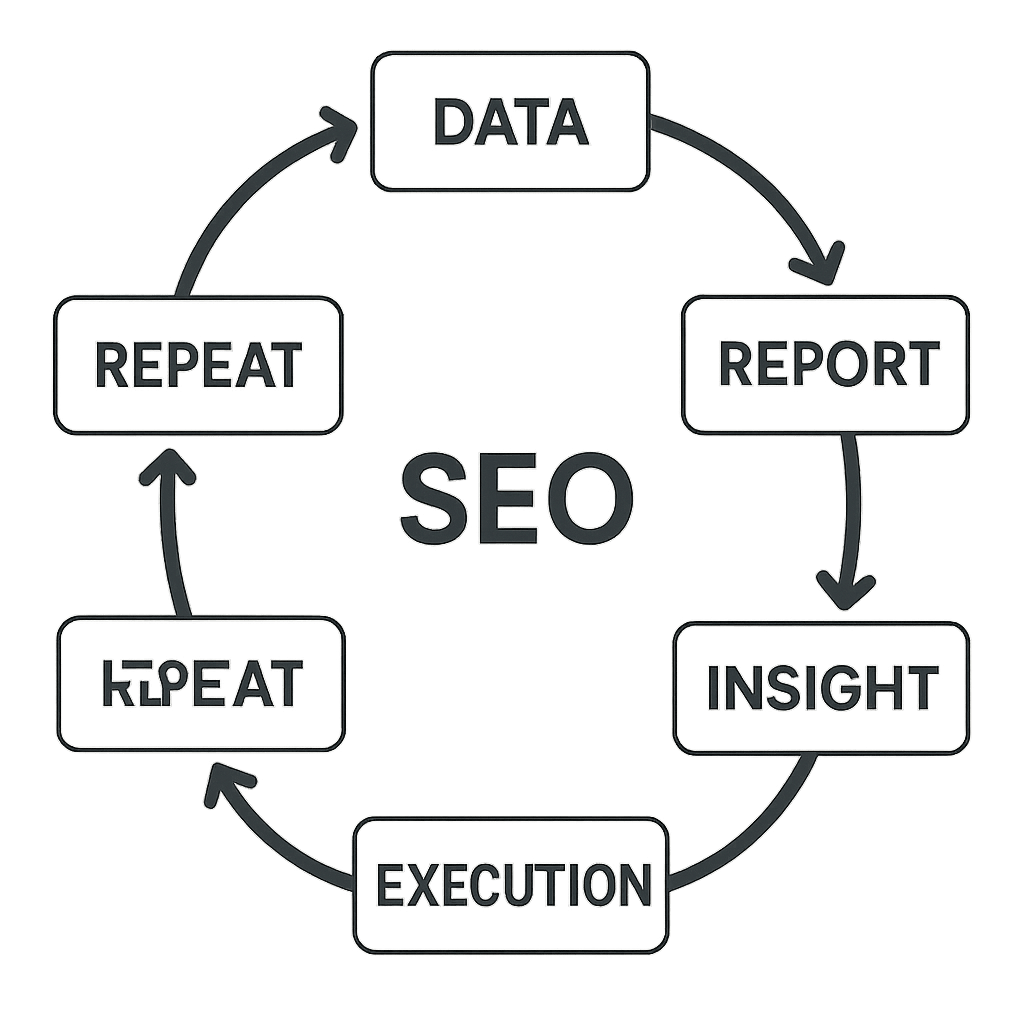- A. The Data Deluge: Why Manual SEO Reporting Is No Longer Viable
- B. Defining Your North Star: What Makes a Great SEO Reporting Tool?
- C. The Titans of Automation: A Deep Dive into the Top SEO Reporting Tools
- D. Beyond the Tools: Crafting Reports That Tell a Story
- E. Integrating Reporting into a Cohesive Digital Strategy
The Data Deluge: Why Manual SEO Reporting Is No Longer Viable
In the digital landscape, data isn’t just king; it’s the entire kingdom. For any business serious about its online presence, Search Engine Optimization (SEO) is the engine of visibility, and data is its fuel. We’ve moved far beyond simply tracking a handful of keywords. Today’s SEO encompasses a dizzying array of metrics spanning technical health, backlink authority, user experience, local search performance, and content engagement. Manually wrangling this information from disparate sources like Google Analytics 4, Google Search Console, rank tracking software, and backlink auditors is not just tedious; it’s a strategic liability. The hours spent exporting CSVs, wrestling with spreadsheet formulas, and formatting charts are hours not spent on analysis, strategy, and execution—the very activities that drive growth. This manual process is slow, prone to human error, and fundamentally unscalable. As your digital footprint expands, so does the data, quickly turning a weekly reporting task into a multi-day ordeal. According to McKinsey & Company, data-driven organizations are 23 times more likely to acquire customers, a statistic that underscores the critical need for efficient data processing. The solution is not to work harder but to work smarter. Automated SEO reporting platforms have emerged as the essential bridge between raw data and actionable intelligence, transforming the reporting process from a burdensome chore into a powerful strategic advantage. By centralizing data streams and automating the compilation process, these tools liberate marketing teams to focus on what truly matters: interpreting the story the data tells and making informed decisions that boost performance.
Defining Your North Star: What Makes a Great SEO Reporting Tool?
Navigating the crowded marketplace of SEO software can be overwhelming. With dozens of tools all claiming to offer the best insights, it’s crucial to establish a clear set of criteria for evaluation. A great automated reporting tool isn’t just about pretty charts; it’s about flexibility, integration, and the ability to deliver relevant, timely information to the right stakeholders. Before you commit to a platform, it’s essential to understand the core functionalities that separate the truly useful tools from the glorified spreadsheet generators. The right platform should serve as a command center for your SEO data, providing a single source of truth that is both comprehensive and easy to digest. It must be powerful enough for a seasoned analyst yet intuitive enough for a C-suite executive to grasp the key takeaways in a glance. This balance is the hallmark of a superior reporting solution.
Key Features to Demand from Your Reporting Platform
The most effective reporting platforms are built on a foundation of several non-negotiable features. First and foremost is data integration. A tool’s true power lies in its ability to connect seamlessly with the entire marketing stack. This includes foundational sources like Google Analytics and Search Console, but also extends to paid ad platforms, social media channels, call tracking software, and specialized SEO tools for rank tracking and backlink analysis. The goal is to create a holistic view of performance without constantly switching between tabs. Second is customization and white-labeling. Every business and every client has unique Key Performance Indicators (KPIs). A one-size-fits-all report is a recipe for irrelevance. Your chosen tool must allow you to build custom dashboards and reports from the ground up, focusing only on the metrics that matter. For agencies, white-labeling is paramount; the ability to brand reports with your own logo and color scheme reinforces professionalism and brand identity. Third, the core promise of these tools is automation, which means robust scheduling and delivery capabilities are essential. The ability to “set it and forget it,” with customized reports automatically sent to clients or internal teams on a daily, weekly, or monthly basis, is a massive time-saver. Finally, intuitive dashboards and visualizations are critical for turning complex data into understandable insights. Data without context is just noise. The best tools use clean design, interactive charts, and logical layouts to tell a clear performance story, making it easy to spot trends, identify opportunities, and flag potential issues.

The Titans of Automation: A Deep Dive into the Top SEO Reporting Tools
Choosing the right tool depends heavily on your specific needs, budget, and scale. Some are all-in-one suites that cover every facet of SEO, while others are pure reporting platforms designed to integrate with your existing tools. Here’s a breakdown of the industry’s leading contenders, each with its own unique strengths.
Google Looker Studio (Formerly Data Studio): The Free Powerhouse
For those just entering the world of automated reporting or working with a limited budget, Google Looker Studio is an unbeatable starting point. As a free tool from Google, its primary strength lies in its native integration with the Google ecosystem. Connecting to Google Analytics 4, Search Console, Google Ads, and BigQuery is seamless and reliable. Looker Studio operates on a blank canvas model, offering immense flexibility through its drag-and-drop interface. You can build reports of any shape or size, pulling in various data visualization elements like time-series charts, scorecards, and geo maps. While it doesn’t come with pre-built SEO metrics like “Share of Voice” out of the box, it provides the building blocks to create them. The community connectors also allow you to pull in data from third-party sources, though these often come with a separate subscription fee. The main drawback is the steeper learning curve. Unlike more guided platforms, Looker Studio requires a significant upfront investment in time to learn the system and build effective templates from scratch. It can also become sluggish when handling very large or complex datasets. However, for its price point—free—its power and flexibility are truly remarkable. You can find more information at Google Looker Studio.
Semrush: The All-in-One Marketing Command Center
Semrush is far more than just a reporting tool; it’s a comprehensive digital marketing suite that offers an arsenal of features for SEO, PPC, content marketing, and competitive analysis. Its reporting functionality, found within the “My Reports” tool, is powerful precisely because it can pull data from its own vast internal datasets. You can seamlessly integrate metrics from its industry-leading rank tracker, extensive backlink audit tool, and robust site audit crawler directly into your reports. This creates a holistic data view that connects your efforts to outcomes all within a single ecosystem. The report builder is a user-friendly, widget-based system that allows you to drag and drop elements to create custom, professional-looking reports. It also integrates with Google Analytics and Search Console to layer your website’s actual performance data over Semrush’s market data. For agencies, the platform offers deep white-labeling capabilities, making it an excellent choice for client-facing reports. The primary consideration with Semrush is its premium price point, which can be a significant investment. Furthermore, the sheer volume of tools and data can be overwhelming for beginners. However, for businesses and agencies seeking a unified platform to manage and report on the full spectrum of their marketing activities, Semrush is a top-tier contender. A [Miami SEO Company](https://www.lucidsitedesigns.com/web-marketing/miami-seo-company/) can use its local SEO features, for instance, to create highly specific reports on Google Business Profile performance for clients in the region. For a closer look, visit the Semrush Reporting Tools page.

Ahrefs: The Backlink and Keyword Data King
Ahrefs has built its reputation on the back of its phenomenal data-crawling infrastructure, boasting one of the most active web crawlers and the largest index of live backlinks in the industry. According to its own data, the Ahrefs crawler processes up to 8 billion web pages daily. This translates to unparalleled data quality when it comes to backlink analysis, keyword research, and competitive intelligence. While historically it was seen as more of a research tool than a reporting platform, Ahrefs has made significant strides in this area. Its customizable dashboards allow you to create at-a-glance views of your most important projects, tracking keyword movements, backlink growth, and technical health scores over time. You can also configure scheduled email reports for key metrics to be sent directly to your inbox. The platform’s strength in reporting lies in the depth and accuracy of the data it provides. Reports built in Ahrefs can offer a granular view of SERP history, content gaps, and the flow of “link juice” that few competitors can match. The main drawback is similar to Semrush: it is a premium-priced tool. Its dedicated report builder is also less flexible than some competitors, focusing more on exporting pre-defined data views rather than creating fully bespoke documents from scratch. For data purists who prioritize the quality of the underlying metrics above all else, Ahrefs is an essential part of the toolkit. Learn more at the official Ahrefs website.
SE Ranking: The Scalable Solution for Agencies
SE Ranking has carved out a significant niche in the market by offering a powerful, feature-rich platform at an extremely competitive price point. It strikes an impressive balance, making it an ideal choice for freelancers, small businesses, and growing agencies who need robust functionality without the enterprise-level price tag. One of its standout features is its highly customizable and white-label Report Builder. This tool provides a level of flexibility that rivals much more expensive platforms, allowing users to create beautifully branded, in-depth reports that can be fully automated. The platform is a true all-in-one, bundling accurate rank tracking, a comprehensive website audit, backlink monitoring, and competitive research tools. A unique feature that appeals particularly to agencies is the built-in lead generation tool, which allows you to embed a site audit widget on your agency’s website to capture new client leads. While its data index for backlinks and keywords may not be as vast as Ahrefs, it is more than sufficient for the vast majority of users and projects. For agencies looking for a scalable, cost-effective solution to manage and report on a growing roster of clients, SE Ranking presents an exceptional value proposition. Explore its features at SE Ranking.

AgencyAnalytics: Built for Agencies, By Agencies
As the name implies, AgencyAnalytics is a reporting platform built from the ground up with the specific needs of marketing agencies in mind. Unlike the all-in-one suites, its primary function is not data collection but data aggregation and presentation. Its biggest strength is its massive library of over 75 integrations. It connects not only to SEO tools like Google Analytics, Search Console, and major rank trackers but also to PPC platforms, social media networks, email marketing services, and call tracking software. This allows agencies to create truly comprehensive marketing reports that show clients the full picture. The platform is designed for client-focused reporting, with features like a secure client login portal where they can access a live dashboard 24/7. The report builder is incredibly intuitive, using a drag-and-drop interface and a vast library of pre-built widgets and templates to make report creation fast and easy. It also allows for the inclusion of goals, annotations, and summary sections to add crucial context to the data. The main thing to understand is that AgencyAnalytics is a pure-play reporting tool. You will still need subscriptions to other platforms like Ahrefs, Semrush, or a dedicated rank tracker to generate the raw SEO data, which AgencyAnalytics will then pull in via API to present beautifully. For agencies that prioritize efficiency, scalability, and a premium client experience, it’s an industry-standard solution. See more at AgencyAnalytics.
Beyond the Tools: Crafting Reports That Tell a Story
Investing in a powerful automated reporting tool is only the first step. A report filled with data but lacking a narrative is just noise. The ultimate goal of any report is to communicate value, demonstrate progress, and provide a clear, data-backed rationale for future actions. This requires shifting the focus from simply presenting metrics to telling a compelling story about performance. The most significant value an expert provides is the context that surrounds the data. It’s about connecting the dots between a successful content campaign and a subsequent rise in organic conversions, or diagnosing a drop in rankings by correlating it with a recent algorithm update and competitor activity. This analytical layer is what transforms a static document into a dynamic strategic asset that guides the entire [Web Marketing](https://www.lucidsitedesigns.com/web-marketing/) effort.
From Data Points to Strategic Insights
The true power of automated reporting is that it frees up the human expert’s time for this high-level analysis. Instead of spending hours compiling data, you can spend that time asking the important questions: Why did our organic traffic from this keyword cluster increase by 30%? What is the business impact of gaining three high-authority backlinks last month? How does our performance in Core Web Vitals correlate with user engagement on key landing pages? Your report should always include an executive summary written in plain language, explaining the key wins, challenges, and, most importantly, the recommended next steps. This human element is irreplaceable. The automation handles the what—the tool compiles the numbers. The strategist provides the so what—the interpretation and the plan. This is where a partnership with a knowledgeable team can make all the difference, turning data into a clear roadmap for growth.
The Anatomy of a Perfect SEO Report
While every report should be tailored to its audience, a well-structured report generally contains several key components that work together to tell a complete story. Each section should build upon the last, starting with a high-level overview and progressively drilling down into specific performance areas. This structure ensures that both time-crunched executives and detail-oriented marketing managers can get the information they need quickly and efficiently. A clear, logical flow prevents stakeholders from getting lost in the data and helps them focus on the most critical takeaways.
| Section | Key Metrics | Purpose |
|---|---|---|
| Executive Summary | Overall Organic Performance, Key Wins, Action Items | Provide a high-level overview for busy stakeholders. |
| Keyword Performance | Top Ranking Keywords, MoM/YoY Changes, Featured Snippets | Track visibility for target terms and identify opportunities. |
| Organic Traffic & Conversions | Sessions, Users, Goal Completions from Organic | Connect SEO efforts directly to tangible business goals. |
| Backlink Profile | New Referring Domains, Link Quality, Lost Links | Monitor off-page authority and the health of the link profile. |
| Technical SEO Health | Core Web Vitals, Crawl Errors, Indexation Status | Ensure the website’s foundation is technically sound for search engines. |
Integrating Reporting into a Cohesive Digital Strategy
Ultimately, automated SEO reporting should not be an isolated activity. It is the central feedback loop for your entire digital strategy. The insights gleaned from these reports are what inform and validate your every move, from content creation to technical optimization. A report that shows a particular topic cluster is driving significant organic traffic and conversions is a clear signal to double down on that area. This data-driven approach is essential for effective [Content Marketing Miami](https://www.lucidsitedesigns.com/content-marketing-miami/), ensuring that content is created not based on guesswork but on proven user interest and search demand. According to a 2022 report from the Content Marketing Institute, 70% of the most successful B2B marketers have a documented content marketing strategy. Robust reporting is what makes that strategy a living, adaptable document rather than a static plan. It allows you to pivot quickly, capitalize on emerging trends, and allocate resources to the channels and tactics that deliver the highest return on investment.

| Tool | Best For | Key Feature | Price Point |
|---|---|---|---|
| Google Looker Studio | Startups & DIY | Free, highly customizable | Free |
| Semrush | All-in-One Marketing | Integrated data suite from a single source | Premium |
| Ahrefs | Data Purists & Researchers | Best-in-class backlink and keyword data | Premium |
| SE Ranking | Growing Agencies | Excellent value and deep white-labeling | Mid-Range |
| AgencyAnalytics | Pure Agency Reporting | 75+ integrations and a dedicated client portal | Mid-Range |
The right automated reporting tool acts as a catalyst, accelerating your ability to process information and make smarter decisions. It eliminates data silos and creates a culture of accountability and continuous improvement. By embracing automation, you are not replacing the human element; you are empowering it. You are shifting your team’s focus away from manual, low-value tasks and toward strategic thinking, creative problem-solving, and building a stronger, more resilient digital presence.
The landscape of SEO tools is vast, but the principle is simple: find the platform that best fits your workflow, budget, and strategic goals. Whether it’s the free-form power of Looker Studio, the all-in-one might of Semrush, or the agency-centric focus of AgencyAnalytics, the right tool will do more than just save you time. It will provide the clarity and confidence needed to navigate the complexities of modern SEO. But remember, the tools are just enablers. The real value comes from the expertise to interpret the data, craft a winning strategy, and execute it flawlessly. If you’re ready to move beyond spreadsheets and turn your SEO data into your most powerful asset, it might be time to partner with a team that lives and breathes this every day.

Leave a Reply